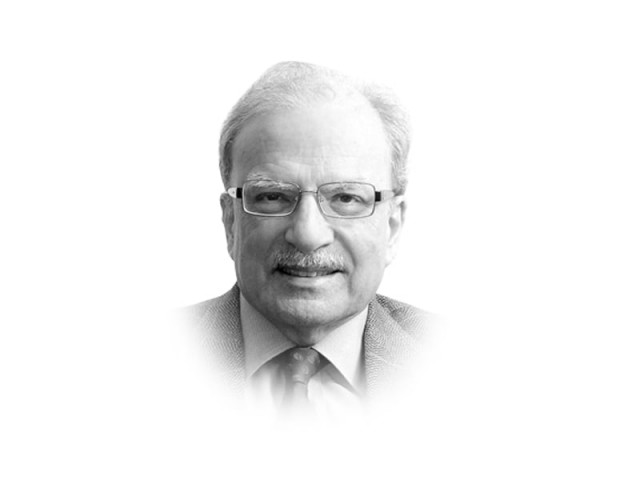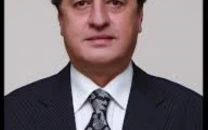Central Asia’s position in the reordered world
European interest in the energy-rich Central Asia was to seek alternative sources of supply of gas and oil

When historians look back at President Vladimir Putin’s decision to invade Ukraine, Russia’s eastern neighbor, they will be surprised at the colossal blunder — or a series of blunders — the Russian leader made. When he had his troops moved into Ukraine on February 24, 2022, the purpose was to remove from power Volodymyr Zelensky, the independent-minded Ukrainian leader. This objective was to be achieved within a week or two. The plan was to install a pro-Russian leader in Kyiv, the Ukrainian capital, who would slavishly follow Moscow’s diktat. Instead, the Ukrainian leader not only managed to stay in power but kept his military in shape. He received enormous amount of help from the US and its allies in Western Europe in dealing with the Russian move.
Future historians will look with great interest not only at Putin’s failure to achieve his objective in Ukraine but also at the loss of Moscow’s influence in the so-called ‘Stans’ — five Muslim majority states in Central Asia — that had once been the components of the USSR. Without exception, all of them pulled away from Moscow and found good reasons to realign themselves with other powers, China in particular. In retrospect, the Putin’s failed move opened the vast expenses of Central Asia to Beijing, giving it access to the energy and mineral resources with which the region was richly endowed. With China gaining ground in Central Asia, Pakistan also benefitted, enormously so, as I will suggest in the concluding part of this essay.
The sudden flare-up in Kazakhstan that resulted in Russia sending its troops under the cover of a regional alliance it conceived and dominated is one indication of the change occurring in the region. There was unrest in Kazakhstan that had similarity with the one in Ukraine where the youth would like to see their rulers move closer to the West. The move was distinctly homegrown rejection of autocratic and corrupt leadership.
“Russia’s war on Ukraine, and its failure so far to subjugate its smaller neighbor has exposed President Vladimir Putin’s weakness to other smaller Asian nations long viewed by Moscow as part of its rightful sphere of ex-Soviet influence,” wrote Robyn Dixon in her assessment of the changing world position of Putin’s Russia. “The result — polite but obvious snubs in recent months from Kazakhstan to Tajikistan — marks a regional realignment that will only sharpen with international sanctions, a global shift away from fossil fuels and deepening political isolation of Russia.”
The most significant move away from Russia has been made by Kazakhstan that has the largest Russian population out of all the ‘Stans’. Thousands of Russians fleeing from their country to avoid being recruited to do battle in Ukraine, have gone to Kazakhstan as have a number of Western enterprises that were doing work in Russia or planning operations there before the sanctions took effect. Kazakh President Kassym-Jomart Tokayev went to Paris and met with Emmanuel Macron at the Elysée Palace. He sought a closer relationship with France in economics, energy and education. The Kazakh leader was followed to Paris by Shavkt Mirziyoyev, the President of Uzbekistan who had a similar agenda. The most significant pullback from Moscow was by the Russian-led Collective Security Treaty Organization (CSTO) in which the participants expressed a great deal of bitterness at the way Putin was conducting himself in Ukraine. The CSTO was the brainchild of the Russian president who had conceived it as a counter to NATO.
The European interest in the energy-rich Central Asia was to seek alternative sources of supply of gas and oil as the Russians began to counter Western sanctions by cutting down energy exports to the continent. European Council President Charles Michel visited Central Asia to meet the region’s leaders. His visit was followed by Europe’s foreign policy chief Josep Borrell in November. While in Astana, the capital of Kazakhstan, he warned of the dangers of relying too heavily on one partner, “regardless of history or geography”. Earlier in November 2022, the EU signed an MoU with Kazakhstan on the supply of green hydrogen and rate-earth metals.
Another regional organisation got involved in helping Central Asia to distance itself from Russia. The Shanghai Cooperation Organisation that had the heads of state represented when it met in Uzbekistan in September 2022 treated Putin as a diminished figure. The Russian president had tarnished his regional credibility by demonstrating brutish power with a right to dominate small peripheral nations. In response, Putin chose Tokayev as the focus of his contempt, especially when the latter refused to endorse Putin’s Ukraine war, to help Russia bypass Western sanctions or to recognise Moscow’s proxy states in eastern Ukraine. Moscow responded by temporarily stopping Caspian pipeline carrying Kazakh oil to the Back Sea in the summer of 2022 while Russian nationalists warned that Kazakhstan could be next on Moscow’s invasion list.
Looking at these developments, China decided to act; Xi Jinping made his first visit outside China since the pandemic to meet the Kazakh president in Astana where he pointedly promised to support Kazakh territorial integrity. Tokayev decided to develop new routes for the country’s oil exports.
With the Central Asian nations having distanced themselves from Moscow, way was opened for Beijing to reach out to them. With Russia running into serious difficulties in Ukraine, Beijing began to rethink its position. Its stance was not to get aligned with the US and Western Europe especially when there were major differences between Washington and Beijing that did not get resolved with the Biden-Xi meeting on the sidelines of the G20 meeting held in Bali, Indonesia. Beijing in fact reacted to Central Asia’s discomfiture with Moscow and its move in Ukraine. The five ‘Stans’ were rich in energy and minerals — both needed by China to continue to grow its economy. At the same time, CPEC had brought in billions of dollars of Chinese investment into Pakistan. An extended CPEC would give Central Asia access to the sea.
An American economist specialising in Central Asia suggested to me once in a conversation we had in Astana that the most practical way for the landlocked Central Asia was to approach the sea by linking with the Pakistani port of Gwadar the Chinese were improving as part of CPEC programme. CPEC was an important component of the programme President Xi had launched to connect the western part of his country with the sea. He had labelled the programme, the Belt and Road Initiative, or BRI. The road system that was being built under the CPEC initiative could be extended through Afghanistan to reach the various parts of Central Asia.
According to Temur Umarov, Central Asia analyst with the Carnegie Endowment of International Peace, China had not yet edged Russia aside in the new “great game” in Central Asia, but Beijing’s trade and investment in railways and pipelines was growing. “In the long term, I think Russia’s position in central Asia is in inevitable decline,” said Umarov. “Russia needs Central Asia much more than ever before, because Moscow is so isolated, and every single country that continues to have allied relationship with Russia has become so much more vulnerable.”
Published in The Express Tribune, December 12th, 2022.
Like Opinion & Editorial on Facebook, follow @ETOpEd on Twitter to receive all updates on all our daily pieces.














COMMENTS
Comments are moderated and generally will be posted if they are on-topic and not abusive.
For more information, please see our Comments FAQ